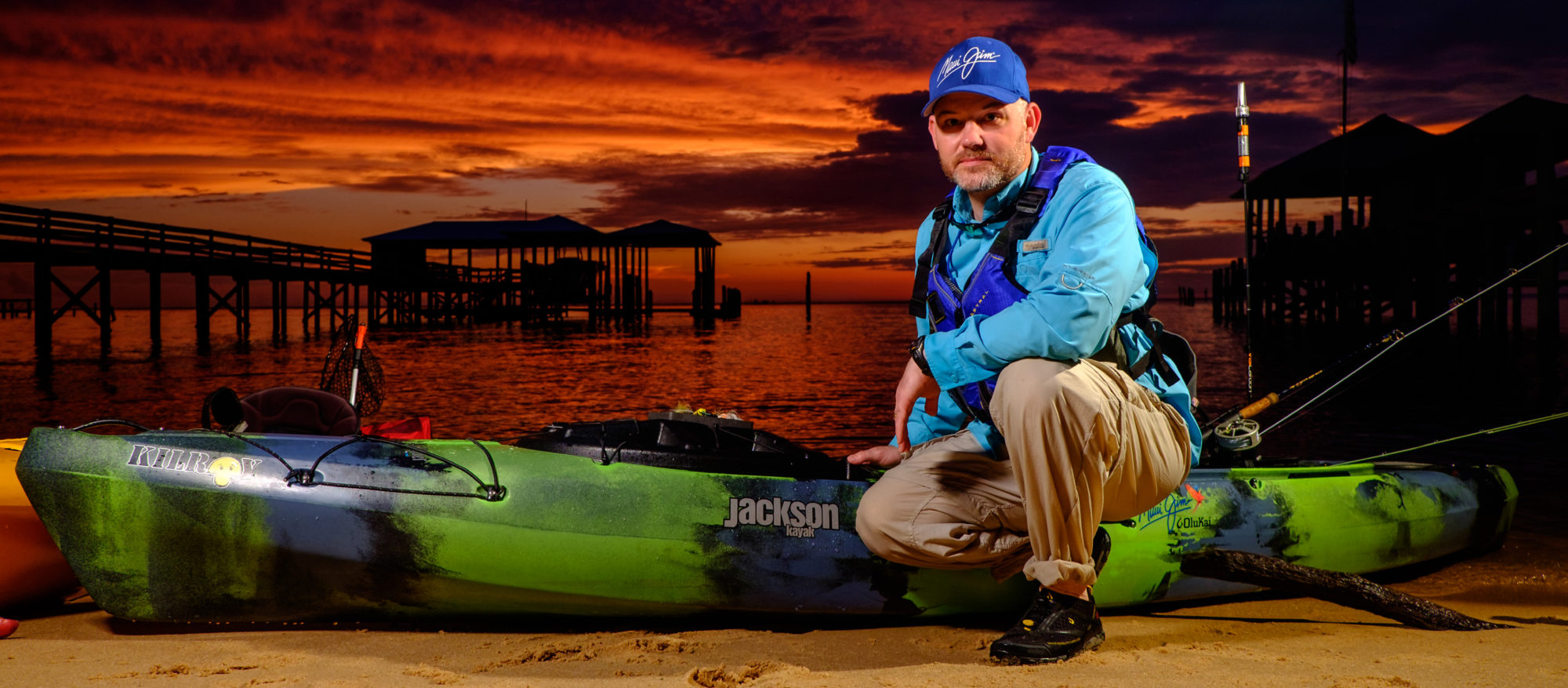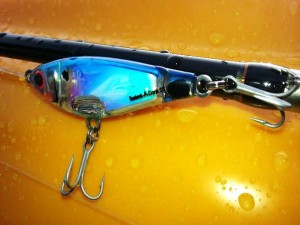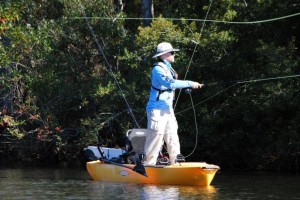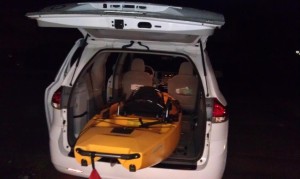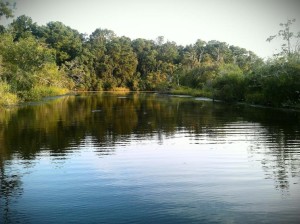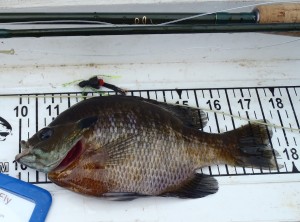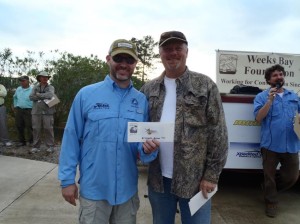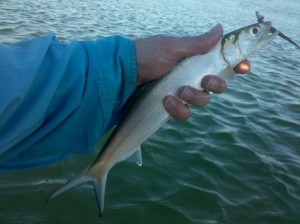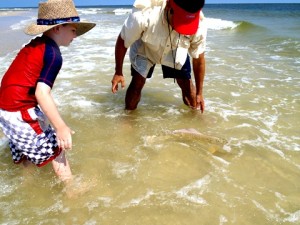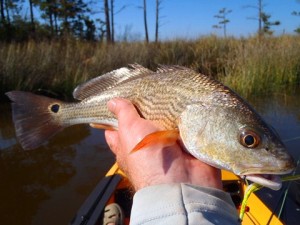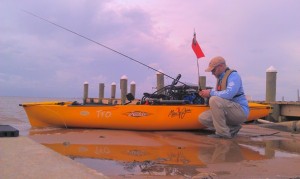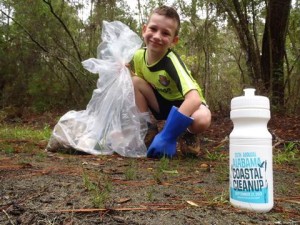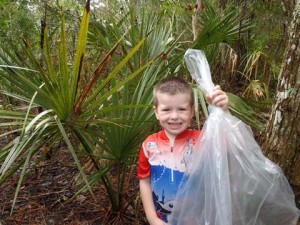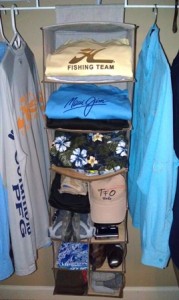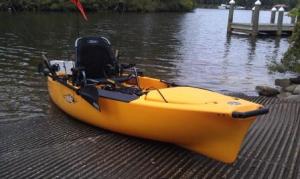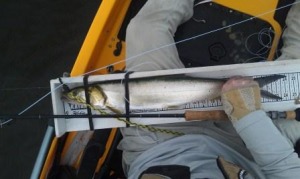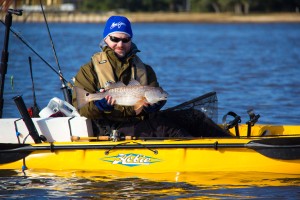 Angler: Aaron Rubel with a 23″ redfish caught in a seam of water flowing off a peninsula.
Angler: Aaron Rubel with a 23″ redfish caught in a seam of water flowing off a peninsula.
Photographer: Jameson Redding
The past couple of weeks along the north central Gulf Coast has been, like much of the country, blustery weather. Temperatures have dipped as low as 15F accompanied with stiff north winds. As fronts pass, wind direction changes, and as a result water clarity vanishes. During the past few seasons of fishing the Mobile Bay and Pensacola area, I have found that January is the time to put the fly rod in reserve, and instead experiment with spinning and baitcasting techniques.
Another thing I have learned is during periods of dark water, the angler needs to be a little more strategic about where to spend effort seeking fish. Look for water that is still moving, yet out of the main current such as a seam flowing off a peninsula from a tidal river. A seam is anywhere you see faster water flowing along slower or slack water. The friction between the two different speeds of water creates a visible “seam” on the surface. The fish will often reside on the side of the softer, slower water. Holding in this position decreases the effort they exert as the fish wait to ambush food drifting by in the faster water. I always position myself on the side with quicker water and cast to the seam. This way, there is less of a chance to line the fish you’re casting to.
Find a choke point that maintains a current and yet has structure protecting it. The protection combined with the pinch point will assist in optimizing clarity through increased speed of water and obstructing or absorbing matter. Subtle differences are what you are looking for as fish are seeking even a small advantage to the food source and reduced turbidity.
Fish can taste, smell, feel, touch, and see. When using artificial flies or lures during tough winter conditions, sight is limited. I typically use techniques that don’t trigger the sense of smell and this presents an even greater challenge to catching fish in these tough conditions.
In this case, triggering the sense of feel is important. A lure or fly that emits vibration is key. Fish feel vibrations through the lower part of the inner ear combined with a lateral line running the better part of the length of their body. On January days when winds have blown water turbid, I tend to go to a lure like the Badonk-A-Donk SS. This will swim subsurface, and the two balls rattling inside the head create vibration in addition to the lure movement in water. Force it to swim erratically to create maximum vibration and evoke nervousness of a baitfish.
Once the fish has engaged on the sense of vibration and flight of lure, sight must close the deal. Color choice is important in darker water. My go to preference for color in saltwater or an estuary that is stained during daytime is blue. The color blue has a short wavelength of light which means it is not absorbed as fast as other colors with longer wavelengths of light. Selecting a color like blue or purple seeks to gain every advantage to lengthen the distance the fish can initially focus in on your lure or fly in cloudy water.
Don’t hesitate to venture out on the water during the height of winter. There will be fewer anglers to compete with. Avoid cotton clothing and opt for wearing synthetics. Select good neoprene foot protection with wool socks inside to keep dry and warm. Make sure to have a high quality pair of polarized eyewear like Maui Jim Sunglasses to cut glare, protect your eyes, and help prevent headaches. Finally, find a choice lure that creates vibration and utilizes colors of short wavelength of light such as blues and purples to bring out the predatory instincts of your target fish.
Copyright 2014 by icastinayak.com. All rights reserved
